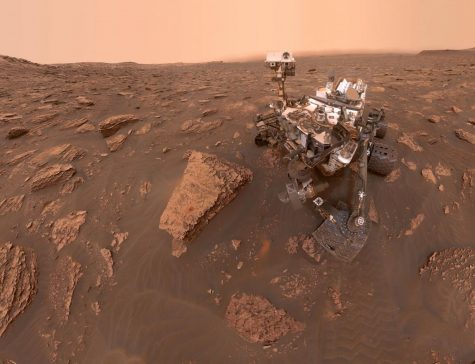What is the NASA inSight Probe doing on Mars?
December 14, 2018
After seven months of traveling through space, the NASA InSight probe landed on Mars. After landing on Mars, inSight sent a “Beep” back to NASA to signal that it was alive and fully functional. It also included a photo of the Martian surface from where it landed.
At 3 p.m. ET on Monday, November 26, is when NASA lands their new InSight lander on Mars, making it the 18th successful space landing in history. After around six to seven months of flight, the lander components of the probe will detach itself from the cruiser stage and head into the atmosphere. The lander component initially looks a little bit like the space capsule used in the 1960s and ’70s for Apollo moon missions. With the bottom having a heat shield that is designed to protect the probe as it passes through the thin Martian atmosphere.
The landing craft has to difficulty batter its way through the atmosphere where it will fly through the Martian air at an initial speed of 12,300 miles per hour, and it must hit the atmosphere at an angle of precisely 12 degrees. Any shallower and the probe will bounce off into deep space. Any steeper and the probe would have burned up in space.
The probe first touches the atmosphere six minutes and 45 seconds before landing. While entering the atmosphere it will experience acceleration 12 times that of earth’s gravity. The probe also weighs 150 pounds. But during it descending it would weigh a ton.
For around 3 and a half minutes the probe hits the atmosphere, a parachute will deploy, slowing down the probe even more than fifteen seconds later the heat shield will be blown off from explosives exposing the actual InSight probe hidden inside. Then ten seconds after the heat shield falls off the probe will extend its legs like an airplane before touching down.
Then for an extra two minutes, the probe will fall then parachute and be protected by its conical shell. About 45 seconds it will drop out of the shell and fall toward the surface. As soon as it leaves the shell its landing rockets will ignite. Then 15 seconds before landing it will start the landing process automatically. Then the probe will start to do what its supposed to do, collect space samples of the Martian planet.






